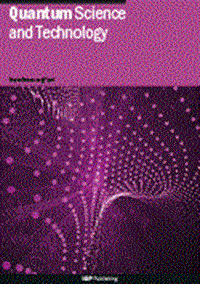用于量子神经形态计算的表达性量子感知器
IF 5.6
2区 物理与天体物理
Q1 PHYSICS, MULTIDISCIPLINARY
引用次数: 0
摘要
量子神经形态计算(QNC)是量子机器学习(QML)的一个子领域,它利用了固有的系统动力学。因此,QNC可以在当代嘈杂的量子硬件上运行,并有望在短期内实现具有挑战性的算法。QNC中的一个关键问题是表征确保表达量子神经形态计算所需的动力学。我们通过将量子感知器(QPs)(神经计算的简化模型的量子版本)的先前建议应用于QNC设置来解决这个问题。我们的量子点计算基于与可调耦合常数相互作用的量子比特的模拟动力学。我们表明,在资源有限的情况下,qp是与经典感知器等效的量子,是神经元的简单数学模型,是各种机器学习架构的构建块。此外,我们还证明了qp在理论上能够产生任何幺正运算。因此,qp在计算上比它们的经典对应物更具表现力。因此,从理论上讲,使用我们的qp构建的QNC架构是通用的。我们介绍了一种技术,以减轻贫瘠高原在量子点称为纠缠细化。我们通过将QPs应用于许多QML问题来证明它们的有效性,包括计算量子态之间的内积,能量测量和时间反转。最后,我们讨论了qp的潜在实现,以及它们如何用于构建更复杂的QNC体系结构,如量子库计算机。本文章由计算机程序翻译,如有差异,请以英文原文为准。
Expressive quantum perceptrons for quantum neuromorphic computing
Quantum neuromorphic computing (QNC) is a sub-field of quantum machine learning (QML) that capitalizes on inherent system dynamics. As a result, QNC can run on contemporary, noisy quantum hardware and is poised to realize challenging algorithms in the near term. One key issue in QNC is the characterization of the requisite dynamics for ensuring expressive quantum neuromorphic computation. We address this issue by adapting previous proposals of quantum perceptrons (QPs), a quantum version of a simplistic model for neural computation, to the QNC setting. Our QPs compute based on the analog dynamics of interacting qubits with tunable coupling constants. We show that QPs are, with restricted resources, a quantum equivalent to the classical perceptron, a simple mathematical model for a neuron that is the building block of various machine learning architectures. Moreover, we show that QPs are theoretically capable of producing any unitary operation. Thus, QPs are computationally more expressive than their classical counterparts. As a result, QNC architectures built using our QPs are, theoretically, universal. We introduce a technique for mitigating barren plateaus in QPs called entanglement thinning. We demonstrate QPs’ effectiveness by applying them to numerous QML problems, including calculating the inner products between quantum states, energy measurements, and time reversal. Finally, we discuss potential implementations of QPs and how they can be used to build more complex QNC architectures such as quantum reservoir computers.
求助全文
通过发布文献求助,成功后即可免费获取论文全文。
去求助
来源期刊

Quantum Science and Technology
Materials Science-Materials Science (miscellaneous)
CiteScore
11.20
自引率
3.00%
发文量
133
期刊介绍:
Driven by advances in technology and experimental capability, the last decade has seen the emergence of quantum technology: a new praxis for controlling the quantum world. It is now possible to engineer complex, multi-component systems that merge the once distinct fields of quantum optics and condensed matter physics.
Quantum Science and Technology is a new multidisciplinary, electronic-only journal, devoted to publishing research of the highest quality and impact covering theoretical and experimental advances in the fundamental science and application of all quantum-enabled technologies.
 求助内容:
求助内容: 应助结果提醒方式:
应助结果提醒方式:


